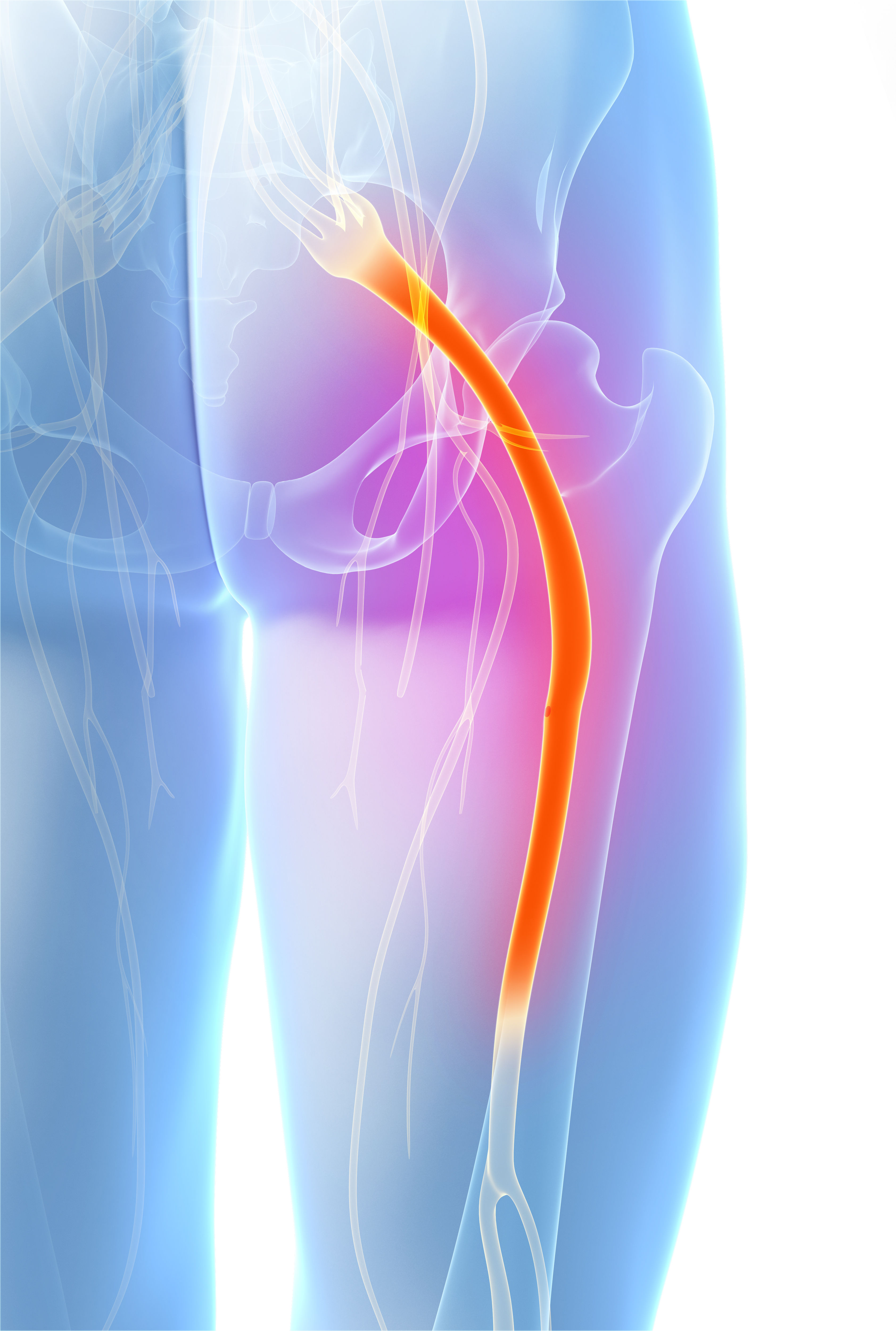
Understanding Sciatica-Related Leg Tingling
Tingling in the legs can occur when sitting for a variety of reasons. A common manifestation of tingling in the legs when sitting is sciatica. Sciatica refers to pain or tingling down the back of the legs. This is different from pain or tingling over other areas such as the front or inside of the legs, although symptoms can overlap.
Sciatica is often associated with compression at the spine of one or more of the nerves that come out of the back and join together to make the sciatic nerve. This compression can be due to bony outgrowths called osteophytes as well as disc herniations that take up space where the nerve exits the spine. However, sciatica-like symptoms are often produced with problems outside the spine as well.

Muscle-Related Leg Tingling and Pain When Sitting
Direct compression of the sciatic nerve in the leg when sitting can lead to pain or tingling down the path of the sciatic nerve. Muscle tightness can compress the sciatic nerve and produce similar pain and tingling. The piriformis muscle is classically associated with this issue. The piriformis muscle originates at the sacrum and inserts into the greater trochanter near the top of the femur. The sciatic nerve crosses the piriformis muscle and in certain positions, such as when sitting, the sciatic nerve may become compressed enough to lead to pain or tingling. In some people, the sciatic nerve passes through the piriformis muscle, and can be compressed simply by tightness in the piriformis muscle itself.
Tightness of muscles in the back of the leg can produce pain and tingling similar to compression of the sciatic nerve. Some of this tingling and pain can occur away from the involved muscle in a phenomenon called referred pain. This referred pain can be vague and sometimes difficult to locate. The psoas muscle in the hip can sometimes refer pain and tingling sensation into the leg. While the psoas muscle usually refers pain into the front of the legs, referred pain can be vague and sometimes it is difficult to distinguish the specific location.

Understanding Complex Causes of Leg Tingling
Multiple issues can occur and present together at the same time, sometimes resulting in intermittent symptoms that can be difficult to locate. For instance, the sciatic nerve may be moderately compressed by the piriformis muscle and further compressed to the point where symptoms occur when sitting places pressure over the nerve. This may lead to the idea that sitting is causing the numbness and pain, when the problem is actually in more than one location. Multiple points of compression can lead to increased sensitivity in the nerve, resulting in increased pain and tingling in the area the nerve supplies.
Treatment and management depend on the cause of the pain and tingling. Stretching and exercise are often helpful in the case where the symptoms are originating in the leg outside of the spine. Common muscles that can produce sciatica-like symptoms and are good targets for stretches include iliopsoas in the hips, piriformis & gluteals around the pelvis, and hamstrings & gastrocsoleus muscles in the legs.

Improving Posture and Ergonomics for Sciatica Relief
Improving sitting posture and workstation arrangement can help decrease strain on the back and discs of the spine. Sit stand desks are gaining popularity and help maintain better ergonomics while working. Sitting moves the center of mass of the body forward, resulting in increased force on the discs of the back. Leverage from poor sitting posture such as slouching multiplies force on the spine and discs, leading to increased wear and strain. Disc bulges and herniations can occur which may result in the situation where the disc bulges and presses towards one side compressing a nerve as it exits the spine. Sciatica symptoms due to disc bulges or herniation in the spine will typically be on one side, while compression of the sciatic nerve outside of the spine has a higher chance of affecting both legs. Chiropractic treatment can improve motion in the spine and help relieve pressure on the discs and nerves exiting the spine. Therapeutic ultrasound is an effective treatment for inflammation around the disc and spine that produce back pain with sciatica.
Sciatica can be aggravated or produced by injuries such as car accidents as well as from chronic causes such as sitting too much. Auto accidents cause injuries throughout the body and can often produce injuries around the low back, pelvis, and legs. Chiropractors are well positioned to identify and treat the many potential causes of sciatica symptoms. Contact your Chiropractor if you are suffering from tingling or pain down the leg.


